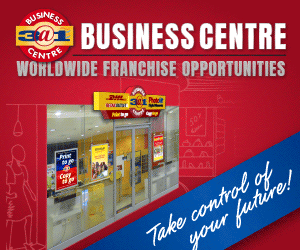Succession and exit planning are critical yet often overlooked aspects of entrepreneurship. With around 70% of business owners lacking a formal exit plan, entrepreneurs must have a robust strategy to ensure their hard work translates into a successful transition and financial security. Whether you’re considering stepping back to enjoy the fruits of your labour or passing the torch to a new leader, having a well-thought-out plan can make all the difference.
Let’s explore the essential steps to ensure for smooth and successful exit planning.
Step 1: Understand the need for an exit strategy
The decision to exit a business can stem from various motivations—personal reasons, a desire for new ventures or retirement. Reflect on why you want to sell. Exiting when your business is thriving rather than in decline ensures you maximise its value. According to the 2022 Business Owner Survey Report, businesses that exit at their peak achieve significantly higher valuations compared to those exiting during downturns. Furthermore, the report found that 76% of business owners who sold their businesses regretted the decision within a year, highlighting the importance of a well-thought-out plan.
The PwC Family Business Survey 2023 supports this, noting that 48% of family businesses plan to pass on management to the next generation, yet only 15% have a robust, documented, and communicated succession plan.
Step 2: Find the right time to sell
Timing is everything. Selling when your business is doing well rather than struggling will fetch a better price. Monitor market conditions, the economic climate, and industry trends. A long-term perspective is crucial. At the CFO Centre, we usually advise business owners to have a minimum of five years to properly plan their exit strategies, ensuring all aspects are thoroughly considered and executed.
Step 3: Do a business valuation
Getting the right value for your business is paramount. Overestimating or underestimating its worth can derail your plans. Engage financial advisors and professional valuators early. Consider a client who aimed to sell their business for R40 million, only to discover it was worth R15 million. Through a strategic exit plan over six years, they increased the value to R50 million, demonstrating the importance of realistic and proactive planning. Businesses with a clear succession plan typically sell for 20-30% more than those without.
Step 4: Balance your family and shareholder interests in succession planning
If family members are involved in your business, plan for their future roles. Decide if they will continue or exit with you. Similarly, consult with shareholders to align your exit strategy with their expectations. Determine if you want to sell entirely or retain a stake, and decide the capacity in which you wish to remain involved, if at all.
The 2022 Business Owner Survey Report highlights that family businesses with clearly defined roles and formal succession plans have a higher survival rate into the second generation. Your role as the owner is often indispensable, and that is why identifying and training a successor yourself is critical. Sometimes, splitting your role across several individuals can ensure a seamless transition. This process takes time, so start early to avoid disruptions. According to the survey, only 27% of private company boards say they have an adequate succession plan in place, highlighting a significant gap in strategic planning.
Step 5: Leverage advisors
Getting good advice is vital, such as from CFOs, corporate finance advisors, legal consultants and business strategists. They provide diverse perspectives and expertise, can help you craft a robust exit plan and navigate the complexities of the exit process. Research indicates that businesses with a comprehensive advisory team achieve up to 40% higher transaction values. The PwC survey echoes this, noting that external advisors can play a critical role in succession planning, especially in areas where internal expertise may be lacking.
Step 6: Plan for life after Exit
Up until now, we spent a lot of time helping you understand the impact of your departure on the business and its operations – but what about you? Plan for what you will do post-exit to avoid the void many entrepreneurs feel after selling their business. About 35% of entrepreneurs struggle with identity loss after selling their businesses, emphasising the need for post-exit planning. The client mentioned earlier found themselves in regret two years post-sale and sought new ventures, highlighting the need for a meticulous post-exit plan that will continue to give you purpose.
Step 7: If you have not yet, adopt a founder’s mindset
Throughout steps 1 to 6, you should’ve already adopted a founder’s mindset. Maintain that mindset not only throughout this process, but even after you’ve exited the business to ensure you don’t lose a sense of purpose. View your business not just as a source of income but as a viable, scalable entity. This mindset will help you develop a succession plan that ensures the business continues to thrive and innovate beyond your tenure.

Succession and exit planning is a journey that requires time, foresight, and a team of trusted advisors. Don’t wait until you’re tired or your business is struggling to decide to sell. Start planning for this early-on, and surround yourself with experts. With a strategic approach, you can ensure a successful transition that benefits you, your business, and its future stakeholders.






